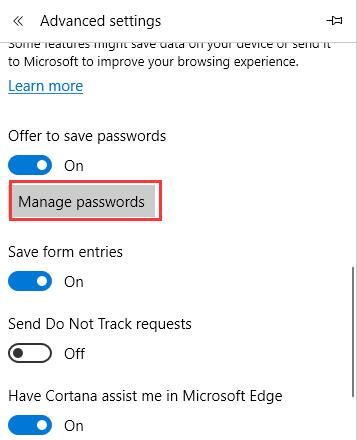
Manage passwords password#
You can indicate what GPG key you want to use for your password store by either the name associated with the key or the digital fingerprint. To start using pass, you must initialize a password store, which is defined as a storage location configured to use a specific encryption key. Backup your ~/.gnupg directory, so you don't accidentally erase it the next time you decide to try an exciting new distro on a whim. If you're new to digital encryption keys, it can take some getting used to. If you already manage several SSH keys, you're probably used to this.

Just knowing your password is not enough. Should you lose it, anything locked by it becomes unobtainable. Combined, these two things can lock and unlock encrypted information, such as a file containing a password.Ī GPG key is much like a house key or a car key. Your key is a digital file, and your password is known only to you. You're prompted for your name and email address and create a password for the key. Free online course: RHEL Technical Overview.To create a GnuPG key, run this command: $ gpg -generate-key
Manage passwords install#
The most common open source PGP implementation is GnuPG (GPG), which ships with Linux, and you can install it on macOS from, Homebrew, or Macports. If you already maintain a PGP key, you can skip this step, or you can choose to create a new key exclusively for use with pass. On macOS, you can install it using Homebrew: $ brew install pass Configuring GnuPGīefore you can use pass, you need a valid PGP ("Pretty Good Privacy") key. On Elementary, Mint, and other Debian-based distributions: $ sudo apt install pass On Fedora, Mageia, and similar distributions, you can install it with your package manager: $ sudo dnf install pass You can install the pass command from your distribution repository. I primarily use pass, a classic UNIX-style password management system that uses GnuPG (GPG) for encryption, and the terminal as its primary interface. But my main vault of password storage is a lot simpler than any of these methods. These solutions help make maintaining unique passwords easy, and I use these convenient systems for a selection of passwords. If that's not enough for you, there are excellent open source projects like BitWarden that can host your encrypted passwords, ensuring that only you have the key to unlock them. The most common internet browsers also have a synchronization feature to help you distribute your passwords between the browsers you run across all your devices, so you're never without your login information when you need it.


Fortunately, the bulk of those passwords are probably for websites, and you probably access most websites through your internet browser, and most browsers have a built-in password manager. These days, we all have a few dozen passwords.


 0 kommentar(er)
0 kommentar(er)
